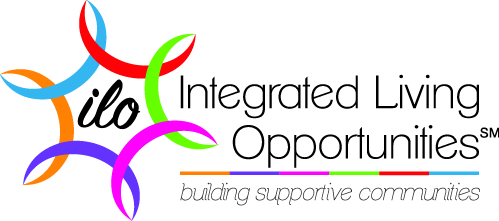Friday, June 3, 2016
Individuals with disabilities face many challenges when it comes to post-secondary education. Experts in the disability field, as well as professors, special needs educators, and students themselves, identify obstacles such as poor study skills, inadequate self-advocacy skills, inadequate academic preparation, and a lack of mentors with disabilities as significant challenges which need to be overcome in order to successfully enroll in and complete a post-secondary program.
Not surprisingly, one of the largest challenges – and the hardest to overcome – as identified by all three parties is the lack of financial resources. Many students with disabilities find it hard to secure financing to complete the program, and in light of the challenges faced by individuals with disabilities in the work force, it can be very difficult to pay back the money borrowed to complete the program after graduation.
Recently, the Department of Education (on behalf of President Obama) made an announcement that lightened the financial burden on hundreds of thousands of Americans with disability; this announcement will not only ensure that students with disabilities can begin their working careers debt free after graduation, it may also ensure that financial support is easier to secure before enrolling in post-secondary education.
Interested? Please read on to learn more!
Debt Forgiveness for Americans with Permanent Disability
On Tuesday, April 12, 2016, the US Department of Education announced that it will be revamping the process through which individuals with disability apply for total student debt forgiveness – a decision that will positively impact 400,000 individuals with disability, and would forgive $7.7 billion in student loan debt. According to an article on Market Watch, of those 400,000 individuals approximately 170,000 borrowers are in default on their student loans, and of that group more than 100,000 are at risk of having their tax refunds or Social Security checks garnished to pay off that debt.[i]
The program through which this is possible – the Total and Permanent Disability loan discharge is a federal loan-forgiveness program for people that cannot work because of a total and permanent disability. According to the Federal Student Aid website, person can have a total and permanent disability in one of three ways:
1.) If you are a veteran, you can submit documentation from the U.S. Department of Veterans Affairs (VA) showing that the VA has determined that you are unemployable due to a service-connected disability;
2.) If you are receiving Social Security Disability Insurance (SSDI) or Supplemental Security Income (SSI) benefits, you can submit a Social Security Administration (SSA) notice of award for SSDI or SSI benefits stating that your next scheduled disability review will be within 5 to 7 years from the date of your most recent SSA disability determination; or
3.) You can submit certification from a physician that you are totally and permanently disabled. Your physician must certify that you are unable to engage in any substantial gainful activity by reason of a medically determinable physical or mental impairment that:
- Can be expected to result in death;
- Has lasted for a continuous period of not less than 60 months; or
- Can be expected to last for a continuous period of not less than 60 months.
This program was initiated four years ago under a federal law that mandated that individuals with severe disabilities were eligible to take steps to discharge their federal student loans. The program – which was criticized as being too complicated – was underutilized by qualified borrowers.
Too many eligible borrowers were falling through the cracks, unaware they were eligible for relief, said Ted Mitchell, Under Secretary of Education. Americans with disabilities have a right to student loan relief. And we need to make it easier, not harder, for them to receive the benefits they are due.
This new process streamlines the old method of discharging student loans – rather than each individual applying for a discharge and being required to submit documentation proving their eligibility, the Department of Education has been independently identifying those that are eligible. Letters to 387,000 individuals that are eligible have been mailed, and those individuals that receive a letter simply have to complete and return the attached application.[ii]
It is important to note that all individuals receiving debt forgiveness will be monitored for a period of three years and may be required to resume payments if his or her income and earning status increases.
Would You Like More Information?
At ILO, we are committed to building intentional communities built upon choice, self-direction, inclusivity, and supported independence for young adults with disability. We strongly believe that every individual has the right and the ability to strive to achieve his or her dreams – for many individuals, this includes post-secondary education.
If you would like to learn how you can help your family member with disability begin the process of realizing his or her post-secondary dream, please contact us. We would love to provide you with the information you need to move forward, and are able to connect you to the financial and life planning experts that can guide you towards the right path.
Thank you for taking the time to visit our blog today – we hope you will join us next week, for our discussion of the Special Needs Fairness Act. If you enjoy reading our blogs, please take a quick moment to subscribe to our blog, found on the right hand side of the blog webpage. This will ensure that a copy of our latest post will be delivered to your inbox weekly.
Again, thanks for dropping by. Have a great Thursday!
[i] http://www.marketwatch.com/story/why-obama-is-forgiving-the-student-loans-of-nearly-400000-people-2016-04-12
[ii] http://www.businessinsider.com/obama-forgiving-people-with-disabilities-student-loans-2016-4
